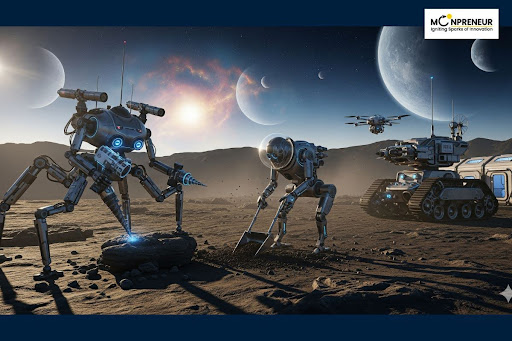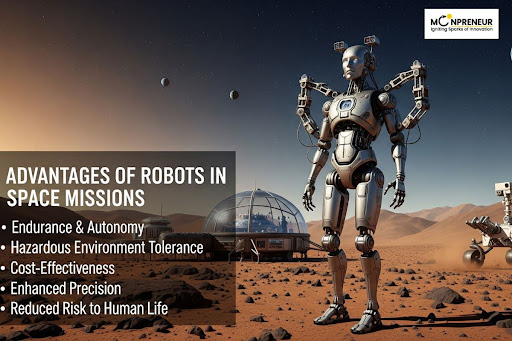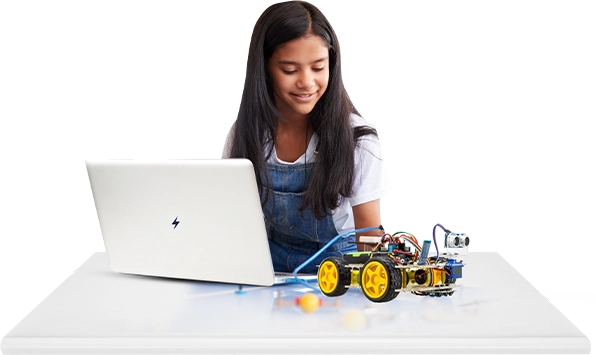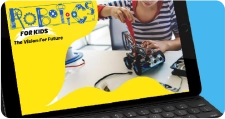
Space exploration is one of humanity’s greatest achievements, but it comes with extreme challenges—hostile environments, vast distances, and high risks. To overcome these, scientists and engineers rely heavily on robots in space exploration. Robots have become essential for gathering data, assisting astronauts, repairing spacecraft, and even preparing planets for future human settlement. Evaluating their contributions helps us understand why they are the backbone of current and future space missions.
The Role of Robots in Space Exploration
Robots are designed to withstand harsh conditions like radiation, freezing temperatures, low gravity, and lack of atmosphere—making them ideal for places humans cannot easily reach. They act as our tools, assistants, and explorers in space. For example, the Mars rovers Curiosity and Perseverance drive across the Martian surface, studying rocks and searching for microbial life. On the International Space Station (ISS), the Canadarm2 robotic arm helps astronauts move large equipment and dock spacecraft. Robots not only extend human reach but also reduce mission risks significantly.
Advantages of Robots in Space Missions

The benefits of using robots in space exploration are vast:
- Enhanced Safety: Robots protect astronauts from radiation, lack of oxygen, or extreme weather conditions.
- Cost-Effectiveness: Robots don’t need food, water, or return tickets, saving billions in mission costs.
- 24/7 Operation: Unlike humans, robots don’t tire—they can collect samples, send data, and monitor conditions continuously.
- Precision Work: With advanced sensors, cameras, and AI, robots perform delicate operations like drilling, analyzing soil, or docking spacecraft with extreme accuracy.
- Extended Reach: Robots like the Voyager probes have traveled beyond our solar system, going farther than any human could currently survive.
These advantages prove that robots are not just assistants but mission enablers.
Limitations and Challenges of Robots
Despite their importance, robots also face limitations:
- Communication Delays: Signals from Earth to Mars take 4–20 minutes. Robots often need to work autonomously without real-time instructions.
- Technical Failures: Once launched, robots are hard to repair. A single malfunction could end a mission worth billions.
- Limited Problem-Solving: Robots follow programming and AI rules, but they cannot think creatively like humans in emergencies.
- High Development Costs: Designing, testing, and launching advanced robotic systems requires years of research and heavy investment.
This evaluation shows that while robots are powerful, they cannot fully replace human ingenuity. Instead, a human-robot partnership is necessary for success.
Examples of Robots in Space Exploration
Over the years, several iconic robots have shaped our understanding of the universe:
- Mars Rovers (Sojourner, Spirit, Opportunity, Curiosity, Perseverance): Exploring terrain, testing soil, and searching for life.
- Voyager 1 & 2 Probes: Launched in the 1970s, still sending valuable data from interstellar space.
- Canadarm & Canadarm2: Robotic arms that repair satellites, assemble modules, and assist astronauts on ISS.
- Robonaut 2 (R2): A humanoid robot helping astronauts with daily tasks inside the ISS.
- Lunar Rovers & Chandrayaan-3 Rover (India): Exploring the Moon’s surface and testing for water and minerals.
- OSIRIS-REx: A robotic spacecraft that collected samples from asteroid Bennu and delivered them back to Earth.
These examples highlight how robots are pioneers in places too dangerous or distant for humans.
Future of Robots in Space Exploration
The next era of space exploration will rely even more on robotics:
- Moon Colonization: Robots will build habitats, mine lunar resources, and prepare safe zones for astronauts.
- Mars Missions: NASA and SpaceX plan to use autonomous robots to produce oxygen and fuel from Martian soil before humans arrive.
- Asteroid Mining: Robots may extract rare minerals from asteroids, creating new industries.
- AI-Powered Swarms: Instead of single robots, future missions may send fleets of small, cooperative robots to explore vast areas quickly.
- Interstellar Exploration: With projects like Breakthrough Starshot, mini-robots powered by light sails could travel to other star systems within decades.
Clearly, robots are shaping the future of human expansion into space.
Human-Robot Collaboration in Space
Rather than replacing astronauts, robots work as partners. On the ISS, robotic arms reduce astronauts’ workload. On future Mars missions, robots may act as scouts, builders, and protectors, while humans provide creativity, leadership, and adaptability. This collaboration will create a balance between machine efficiency and human intelligence, ensuring greater mission success.
Conclusion
The evaluation of robots in space exploration proves that they are indispensable partners in unlocking the mysteries of the universe. They make missions safer, cheaper, and more efficient while paving the way for human exploration of planets like Mars. Although robots cannot completely replace human intelligence and adaptability, their presence ensures humankind can reach farther than ever before. The future of space is a human-robot collaboration that will shape our destiny among the stars.
Moonpreneur is on a mission to disrupt traditional education and future-proof the next generation with holistic learning solutions. Its Innovator Program is building tomorrow’s workforce by training students in AI/ML, Robotics, Coding, IoT, and Apps, enabling entrepreneurship through experiential learning.
Related Blogs:
- AI-Enhanced Robotics: The $124 Billion Revolution Reshaping Industry and Labor
- How to Introduce Robotics to Kids Ages 7-8 Years: Activities, Projects & More
- Aibo Robot Dog – The Future of AI and Robotics
- Robotics for 9-Year-Old – Fun and Educational Guide
- The Rise of Soft Robotics: Revolutionizing Automation for the Future
- Top 10 Robotics Games For Kids

























